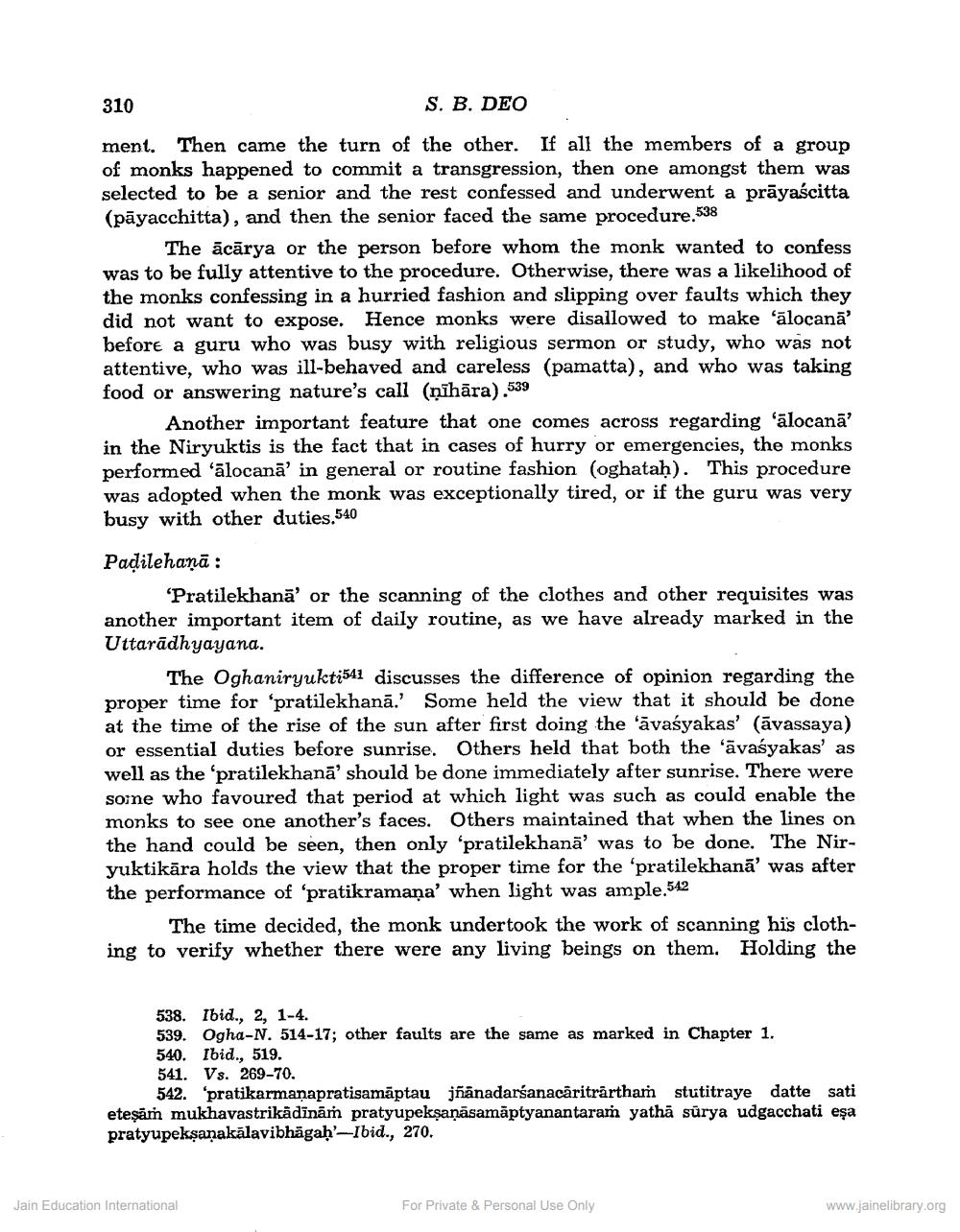________________
310
S. B. DEO
ment. Then came the turn of the other. If all the members of a group of monks happened to commit a transgression, then one amongst them was selected to be a senior and the rest confessed and underwent a prāyaścitta (pāyacchitta), and then the senior faced the same procedure.538
The ācārya or the person before whom the monk wanted to confess was to be fully attentive to the procedure. Otherwise, there was a likelihood of the monks confessing in a hurried fashion and slipping over faults which they did not want to expose. Hence monks were disallowed to make 'ālocanā' before a guru who was busy with religious sermon or study, who was not attentive, who was ill-behaved and careless (pamatta), and who was taking food or answering nature's call (nīhāra).539
Another important feature that one comes across regarding 'ālocana? in the Niryuktis is the fact that in cases of hurry or emergencies, the monks performed 'ālocanā' in general or routine fashion (oghatah). This procedure was adopted when the monk was exceptionally tired, or if the guru was very busy with other duties,540
Padilehanā:
'Pratilekhanā' or the scanning of the clothes and other requisites was another important item of daily routine, as we have already marked in the Uttarādhyayana.
The Oghaniryukti541 discusses the difference of opinion regarding the proper time for 'pratilekhanā.' Some held the view that it should be done at the time of the rise of the sun after first doing the 'āvaśyakas' (āvassaya) or essential duties before sunrise. Others held that both the 'āvaśyakas' as well as the 'pratilekhanā' should be done immediately after sunrise. There were sone who favoured that period at which light was such as could enable the monks to see one another's faces. Others maintained that when the lines on the hand could be seen, then only 'pratilekhanā' was to be done. The Niryuktikāra holds the view that the proper time for the 'pratilekhanā' was after the performance of 'pratikramana' when light was ample.542
The time decided, the monk undertook the work of scanning his clothing to verify whether there were any living beings on them. Holding the
538. Ibid., 2, 1-4. 539. Ogha-N. 514-17; other faults are the same as marked in Chapter 1. 540. Ibid., 519. 541. Vs. 269-70.
542. 'pratikarmanapratisamāptau jñanadarśanacáriträrtham stutitraye datte sati eteşám mukhavastrikādīnāṁ pratyupekṣaṇāsamāptyanantaram yathā sūrya udgacchati eşa pratyupekşanakalavibhägaḥ-Ibid., 270.
Jain Education International
For Private & Personal Use Only
www.jainelibrary.org




